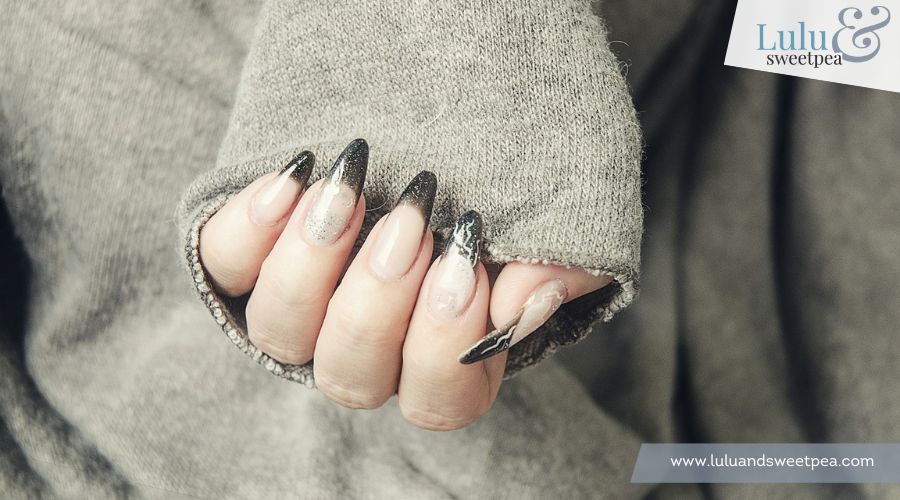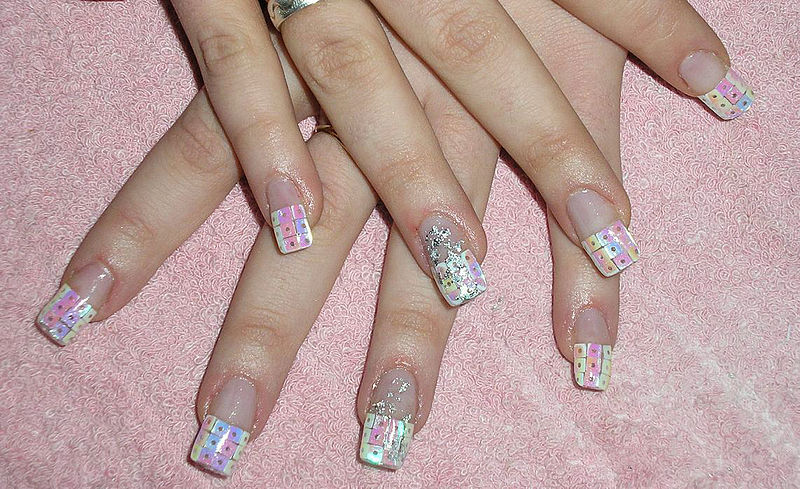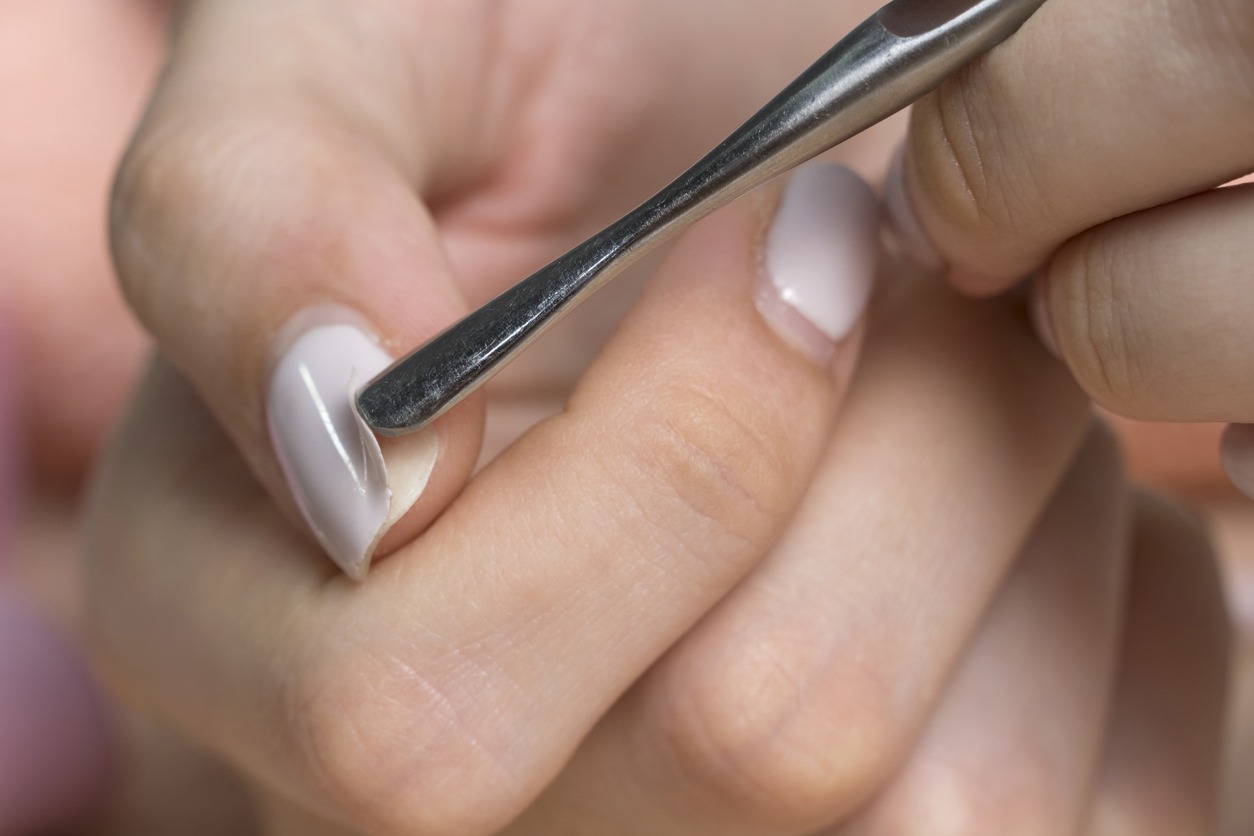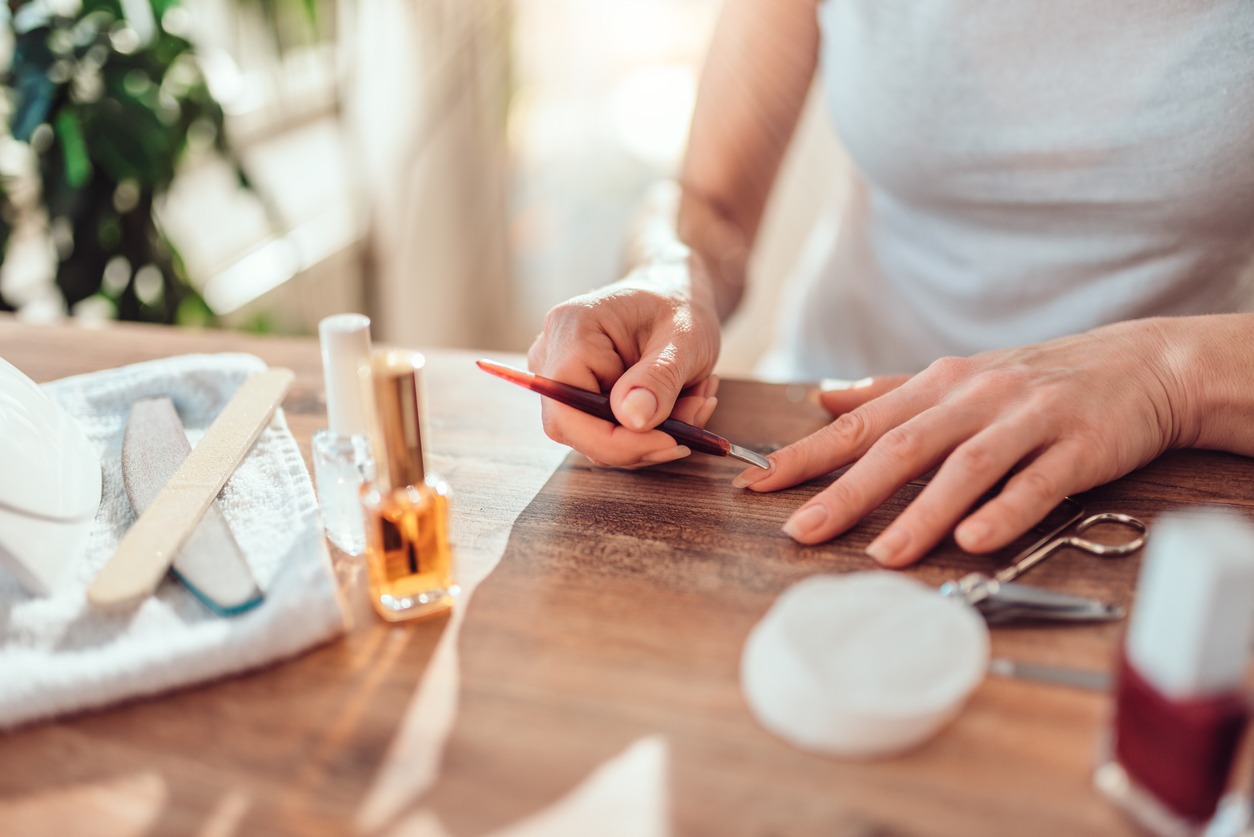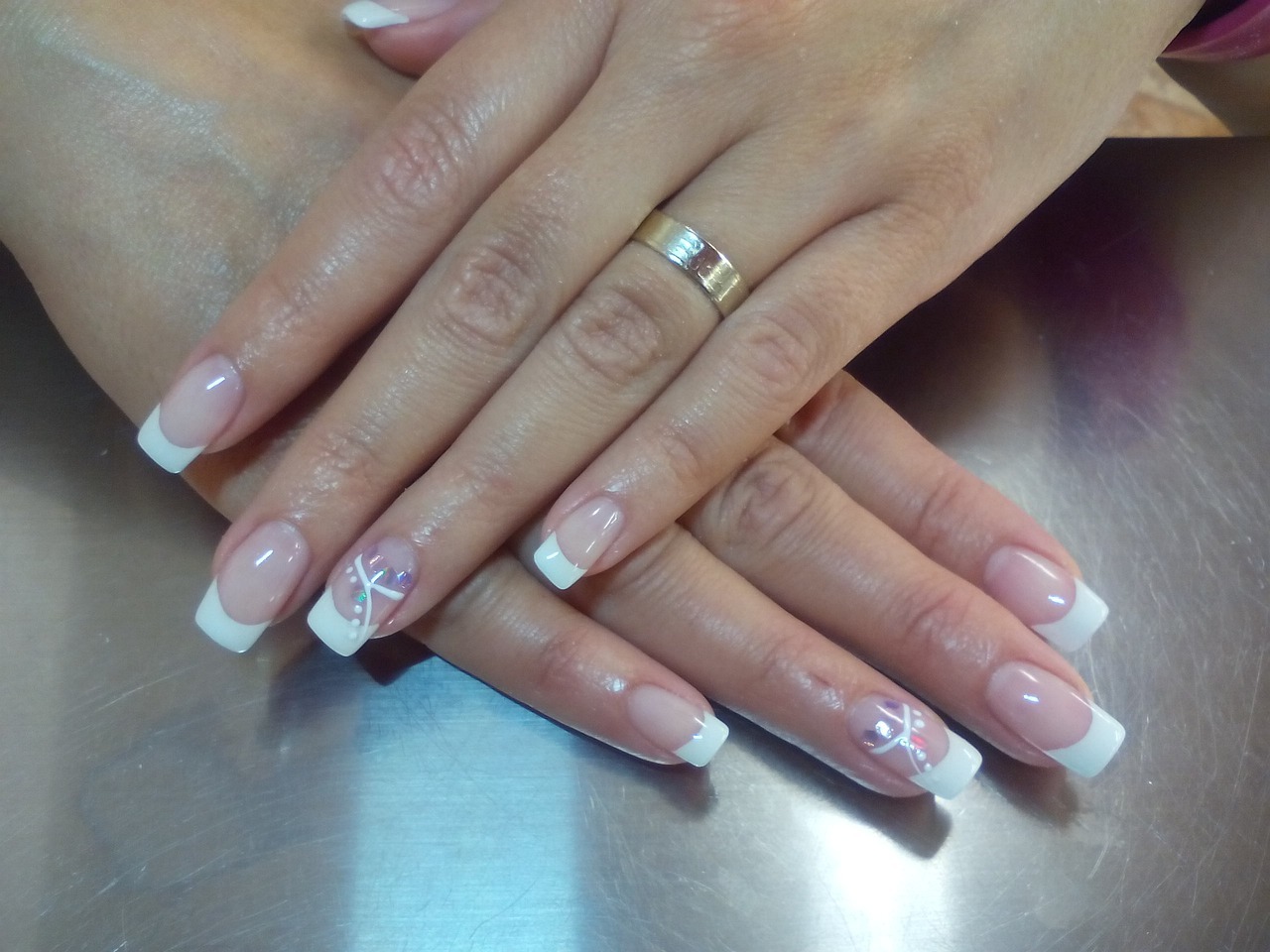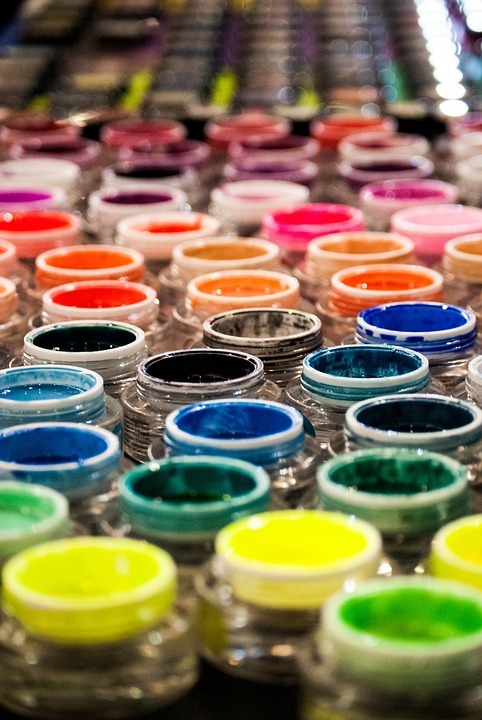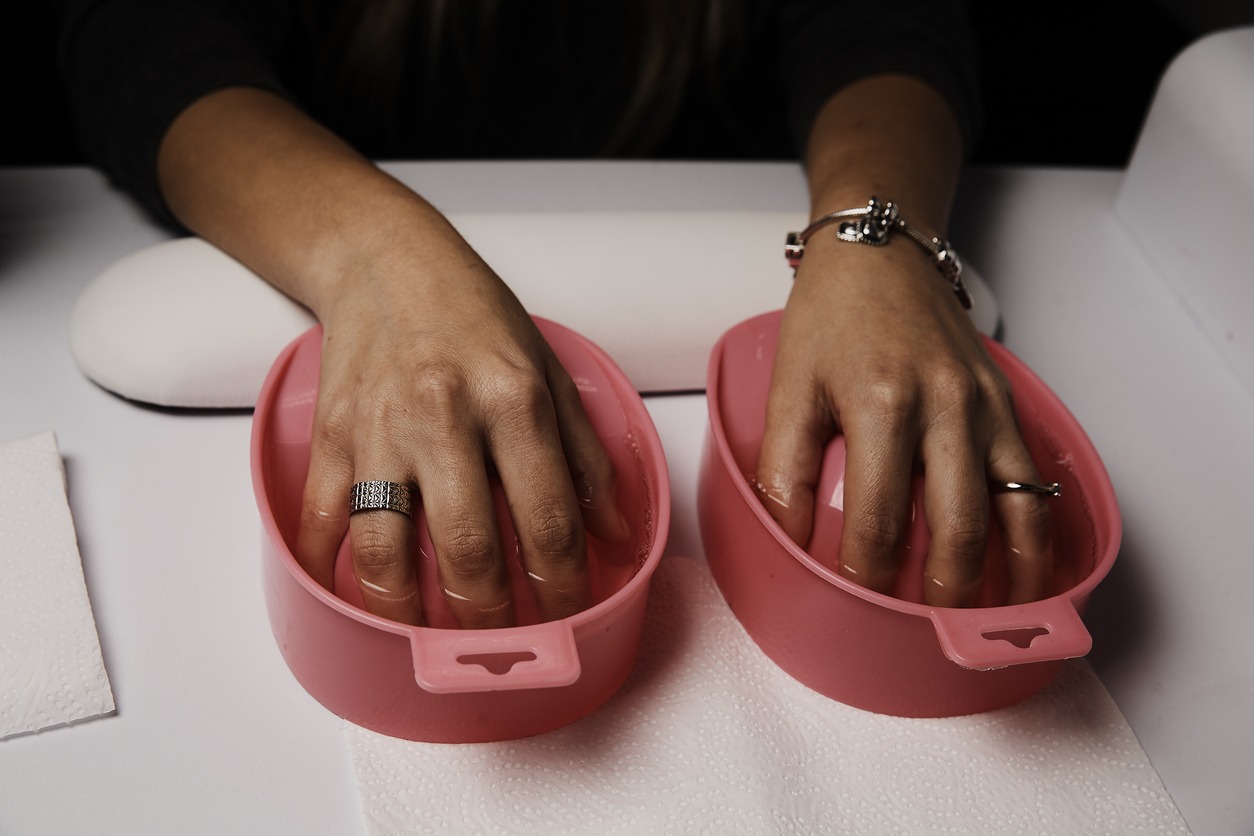Gel manicures have become a staple in nail care routines for their durability and glossy finish, lasting up to two weeks or more without chipping. However, fashion and preferences are ever-changing, and the question arises whether one can simply get a polish change on gel nails. The answer is affirmative. A polish change on gel nails is not only possible but also a convenient way to refresh one’s look without the time and expense of a full gel manicure.
This process involves the removal of the existing gel color and the application of a new gel polish. It’s a cost-effective option that can extend the life of the manicure while giving flexibility to change colors more frequently. Unlike a full gel manicure that includes nail shaping, cuticle care, and often a hand massage, a gel polish change focuses solely on updating the nail color itself.
It’s crucial for the health of the nails to approach this service with caution. Regular gel polish changes should be spaced out to prevent excessive exposure to acetone during removal, which can lead to nail dehydration and weakness. Therefore, maintaining the integrity of the natural nail while enjoying the benefits of a gel manicure requires a balance between aesthetic desires and proper nail care practices.
Understanding Gel Nails
Gel nails offer durability and longevity in manicures that traditional polishes cannot match. This section will delve into the composition of gel nails, their advantages, and the technology behind curing them.
What Are Gel Nails?
Gel nails are artificial nails that are applied as a liquid gel and then cured under a UV or LED light source. Unlike regular nail polish that air dries, gel polish is a viscous substance that requires a specific curing process to harden. The resulting finish is glossy and resilient, providing a chip-resistant coating that can last for weeks without fading or peeling.
Benefits of Gel Manicures
One of the primary benefits of gel manicures is their durable nature. Gel nails maintain their shine and appear freshly done for a significantly longer period compared to traditional nail polish. They are less likely to chip, and thus they are an excellent choice for individuals seeking a long-wearing manicure option. Moreover, gel nails can also provide extra strength to natural nails, which can be particularly beneficial for those with brittle nails.
UV vs LED Light Sources
The curing process of gel polish is essential, and it requires either UV lights or LED lamps. UV lights have been the traditional choice and can cure all types of gel polish. They typically take about two minutes to cure each layer. LED lamps, on the other hand, are faster, curing layers in about 30 seconds. Not all gel polishes are compatible with LED light, so it’s crucial to use the appropriate type of lamp to cure the specific gel polish being applied. LED lamps also tend to last longer and use less electricity, making them a more energy-efficient option.
Polish Changes on Gel Nails
Gel nail polish offers longevity and a glossy finish but requires a specific process for color changes. Understanding the feasibility and proper methods for altering the color on gel nails ensures nail health and aesthetic quality.
Is a Polish Change Possible?
It is possible to change the color of gel nails through a process similar to that of traditional polish changes. Gel polish can be applied over existing gel nails, provided the surface is properly prepared. However, the underlying gel color must be completely covered to maintain a professional appearance.
Gel Polish Removal Process
To remove gel polish, the nails should be soaked in acetone, not simply wiped clean like traditional nail polish. The removal process traditionally involves saturating cotton balls in acetone, placing them on the nails, and wrapping each nail with tin foil to hold the cotton ball in place. The acetone works to break down the bonds in the gel polish, allowing it to be gently scraped or buffed away after sufficient soaking time, typically around 15 minutes. This method is effective but must be done with care to avoid damage to the natural nail.
Safety and Health Considerations
Gel manicures involve the use of UV light for curing polish, which carries a risk of skin cancer. Additionally, maintaining cuticle health is essential to avoid damage during the application and removal of gel polish.
Skin Cancer and UV Exposure
When clients receive a gel polish change, their hands are exposed to UV radiation from the nail dryers, similar to tanning beds, which can increase the risk of skin cancer. Dermatologists often recommend applying a broad-spectrum sunscreen to the hands to provide protection against harmful UV rays before undergoing a gel service. The cumulative effect of UV exposure over time is a concern; thus, clients should consider the frequency of their gel manicures.
Cuticle Care
The care of cuticles is vital for maintaining overall nail health during a gel polish change. Cuticles should not be cut or aggressively pushed back, as this can lead to infections and damage to the nail bed. Instead, they can be gently pushed back after softening. The regular use of cuticle oil can help to keep cuticles moisturized and promote healthy nail growth. Clients should seek advice from a professional, such as a dermatologist, if they experience persistent issues with their cuticles or nails.
Maintenance and Upkeep
Maintaining and caring for gel nails ensures their longevity and keeps them looking their best. Both at-home practices and professional services play a crucial role in the upkeep of these enhancements.
Extending the Life of Gel Nails
To extend the life of gel nails, one should:
- Avoid Direct Sunlight: Prolonged UV exposure can affect the polish.
- Wear Gloves for Protection: When doing household tasks involving water or chemicals.
- Moisturize Regularly: Apply cuticle oil and hand cream to nourish the nails and skin.
- Treat Chips Promptly: Seal any chips or lifts with a clear topcoat until a professional can correct it.
A technician at a salon can assess the condition of gel nails and recommend specific measures based on the client’s lifestyle and nail health.
At-Home vs Salon Care
At-Home Care:
- At-home gel kits: Useful for touch-ups and can be cost-efficient.
- Regular Maintenance: Simple self-care steps like filing and hydration keep nails in good shape.
Salon Care:
- Professional Expertise: A nail technician is equipped to handle more complex issues such as lifting or nail damage.
- Advanced Treatments: Salons can provide services such as gel polish changes or repairs, which are typically beyond the scope of at-home kits.
Cost and Time Investment
When considering a polish change on gel nails, one needs to assess both the financial and chronological aspects involved in the service compared to a regular manicure.
Price Comparison with Regular Manicure
A gel polish change typically costs less than a full gel manicure, with prices for just the polish change starting at around $20. This service includes the removal of the previous color. In contrast, a complete gel manicure can exceed $100. When comparing to a regular manicure, the latter is often more affordable upfront, starting at about $35 for a basic soft gel manicure without extensions.
- Price of a Gel Polish Change: ~$20
- Price of a Full Gel Manicure: >$100
- Price of a Regular Manicure: ~$35
Time Efficiency of Gel vs Regular Polish
The process of a gel polish change is not only cost-effective but also a time-saver. Each coat of gel polish requires curing for just 30 to 60 seconds and there’s no need to wait for drying time. Consequently, an individual can be ready to go immediately after the final topcoat cures. Regular polish, although not involving curing time under a lamp, has a longer drying period, leaving more room for smudges and requiring the individual to wait until the polish is completely dry.
- Gel Polish Curing Time per Coat: 30 to 60 seconds
- Regular Polish Drying Time: Longer, with a risk of smudges during drying
One should also consider the staying power of gel polish, which is more resistant to chips and overall wear compared to regular polish, potentially reducing the frequency of required salon visits.
Nail Aesthetics and Customization
When considering a polish change on gel nails, one has the opportunity to enhance nail aesthetics and allow for customization through the choice of nail shape, length, and the type of top coat finish.
Choosing the Right Shape and Length
The shape and length of one’s gel nails can dramatically impact the overall look and style. Common nail shapes include:
- Round: A classic shape that mimics the natural curve of the nail.
- Square: Offers a bold, trend-forward look great for longer nails.
- Oval: Combines the gentle curve of round nails with the elongation of square nails for a sophisticated appearance.
- Almond: A more extreme oval that tapers towards the tip, suitable for adding an illusion of length to the fingers.
- Stiletto: Dramatically pointed for a statement look, best on longer nails.
Customizing the length and shape should also consider one’s lifestyle and how much wear and tear the nails will endure.
Top Coat and Finish Options
The final touch on any gel nail customization is the choice of top coat, which determines the finish and longevity. Options include:
- Glossy Finish: Provides a high-shine, reflective surface and is the most popular for a bright, vibrant look.
- Matte Finish: Gives a contemporary, flat appearance that stands out for its lack of shine.
- Satin Finish: A subtler sheen compared to glossy, for those who prefer a muted shine.
Each top coat also adds an additional layer of protection to keep the nails chip-free and maintain their appearance for longer. Careful application is key to avoiding overly thick layers that may detract from the elegance of the finished nails.
Alternatives to Gel Nails
In seeking alternatives to gel nails, individuals often consider the durability and appearance of their manicures. Two prominent alternatives are traditional nail polish and acrylic nails or extensions. Each offers a distinct approach to nail beauty while allowing a break from gel treatments.
Traditional Nail Polish
Traditional nail polish remains a steadfast and versatile option. It requires no UV light to cure and is straightforward for one to apply or remove at home. Ideal for routine changes, it offers a vast spectrum of colors and finishes, complementing one’s personal style without the potential brittleness associated with gel products. However, its wear time is typically shorter, with some polishes lasting up to two weeks.
- Application: Brush on, air-dry
- Durability: Moderate, up to 2 weeks
- Removal: Standard nail polish remover
Acrylic Nails and Extensions
For those desiring a longer-lasting and more robust option, acrylic nails and extensions serve as a viable alternative. Acrylics involve a blend of powder and liquid that, when applied to the natural nails, create a durable layer receptive to colors and designs. Extensions enhance nail length and shape, offering a customizable canvas for artistic expression.
- Durability: High, lasts several weeks
- Flexibility: Extensions can add length beyond the natural nails
- Care: Requires regular fills and maintenance for optimal health of the nail beds
Advanced Topics in Gel Nail Care
Advancements in gel nail care are continuously shaped by the expertise of celebrity nail artists who introduce new techniques and styles. These trends offer sophisticated options for those seeking to elevate their gel nail game beyond a basic polish change.
Latest Trends from Celebrity Nail Artists
Celebrity nail artists are at the forefront, crafting unique gel nail designs that quickly become sought after. These artists often collaborate with high-end brands, like NCLA, to create custom gel polishes and nail art kits. Their influence leads to a fusion between fashion and nail care, where trends seen on the runway make their way to everyone’s fingertips.
In terms of specific trends, one can observe a shift towards more eco-friendly gel polishes that promise durability without harsh chemicals. These advanced formulas, championed by notable nail professionals, aim to protect the natural nail bed while providing the long-lasting shine and strength that gel is known for.
Another trend is the use of intricate nail art that requires precision and artistic skill. This includes everything from subtle geometric shapes to detailed landscapes, often featured on the nails of celebrities at red carpet events. The use of advanced techniques like 3D elements and textured finishes adds depth and character to gel nail manicures, pushing the boundaries of traditional nail care.
Frequently Asked Questions
This section addresses common queries related to gel nails, specifically regarding the use of regular nail polish on gel nails and the proper removal techniques to minimize nail damage.
Can Regular Nail Polish Be Used Over Gel Nails?
Yes, one can apply regular nail polish over gel nails. It’s a way to change the color without removing the gel. Prior to application, ensure the gel surface is clean and use a base coat if possible. This can enhance the adherence of the regular nail polish. When it’s time to remove the regular polish, use a non-acetone remover to not affect the underlying gel.
How to Avoid Damaging Nails During Gel Removal?
Gel removal should be approached with care to prevent nail damage. Here are steps for safe removal:
- Preparation: Cuticles should be pushed back gently.
- Protection: Apply petroleum jelly around the nail to protect the skin.
- Acetone Soak: Soak nails in acetone for up to 10 minutes; using rubber gloves can reduce skin exposure.
- Tools: A gentle nail tool should be used to aid removal after the acetone soak.
- Aftercare: Moisturize immediately after to promote nail health.
To avoid stunting nail growth or causing damage, one should limit gel manicure frequency.
Summary
Gel polish changes offer a quicker and usually less expensive alternative to full gel manicures. They involve simply replacing the gel polish color instead of the comprehensive treatment of a full manicure. Durability is a hallmark of gel polish, as it adheres firmly to the nails and can withstand daily activities without chipping.
In a nail salon, a nail technician typically performs the polish change using specialized tools, such as a nail file, to gently remove the old gel. The process also includes the application and curing of the new gel polish under UV or LED lamps, which is necessary for the polish to set properly, preventing drying time which is associated with regular lacquer.
An essential consideration of gel polish changes is the importance of maintaining nail health. Incorrect removal or excessive polishing can lead to weakened nails, potential dark spots, and premature aging of the nail bed. The solvents used can affect the nails, so it is crucial for nail technicians to undertake the procedure with care to avoid damage.
Manicures, whether gel or traditional, should not be conducted back-to-back without allowing nails to rest. Adequate intervals between appointments minimize the risk of damage and maintain healthy nails. It is recommended to consult with a licensed nail professional to ensure that one’s nails are treated properly, safeguarding against adverse effects while enjoying the aesthetic benefits of gel nails.
Recommendations and Tips
Maintaining the look and longevity of gel manicures requires attention to application and removal processes. There are strategic measures one can undertake to optimize manicure life and ensure safe usage of products and tools.
Optimizing the Life of Your Manicure
Using the right products is paramount to extend the life of a gel manicure. It is recommended to apply a top coat every few days to defend against chipping and to sustain the shine of the gel polish. Additionally, minimizing exposure to harsh chemicals such as strong cleaning agents can prevent breakdown of the gel. Wearing gloves while cleaning can protect the polish.
- Apply top coat every 2-3 days
- Avoid direct, prolonged exposure to sunlight
- Wear gloves when using chemicals
Proper Use of Tools and Products
Application and removal of gel polish demand specific tools and products to maintain nail health. During application, use a fine-tip brush for precision and to prevent polish from flooding the cuticle. For removal, soak a cotton ball in acetone, place it directly onto the nail, and wrap with a small piece of aluminum foil, checking nails every 15 minutes to avoid overexposure.
- Use fine-tip brushes for application
- Soak cotton in acetone for removal
- Protect neighboring skin with barrier creams
Careful handling of tools and deliberate product usage can enhance the gel manicure experience, ensuring that nails remain vibrant and healthy longer.
Conclusion
Gel nails have revolutionized the beauty industry, providing a long-lasting and durable option for nail color. When a person decides on a gel polish change, they can expect a straightforward process that involves removing the old gel polish and applying a new color. Manicure enthusiasts often opt for this service as a quick and cost-effective way to refresh their nail color without undergoing a full gel manicure, which is more intensive and expensive.
A typical gel polish change includes:
- Removal of previous gel polish
- Nail shaping and basic cuticle care
- Application of new gel polish color
Key points to remember for maintaining healthy nails and ensuring the longevity of a gel polish change are:
- Regular moisturization: To keep nails and cuticles in optimal condition.
- Proper removal techniques: To prevent nail damage. One should avoid peeling off gel polish as it can harm the nail plate.
- Space manicures appropriately: Continuous application and removal of gel can take a toll, it’s wise to give nails a break.
Gel polish changes cater to those seeking quick, less costly self-care for their nails while still enjoying the benefits of gel such as superior adhesion, longevity, and robustness against daily wear. They offer both practical and aesthetic advantages for regular maintenance of manicured nails.
